A brief history of Cleland Cycles
by Graham Wallace
The Chiltern Hills cover an area of natural beauty less than forty miles north-west of London, England. Geoff Apps spent his teenage years growing up there and developed a love for being at one with nature whilst cycling in the woods. Here people come to relax, walk, ride horses amongst the peaceful hills, woods and valleys.
Geoff was also a skilled motorcycle ‘observed trials’ rider but, on his non-competitive forays, was always unhappy with the noise and disturbance his motorbike caused. What he wanted was a silent and capable off-road machine.
Combining the two disciplines, he modified his Raleigh Explorer road-bicycle, (designed for 24″ wheels) fitting 26″ wheels (650A or 37-590), longer front forks (for 27″ wheels), high and wide handlebars and a 36 tooth chainwheel from a moped. This machine was but a single step on a life-long journey of experimentation, where any vaguely suitable form of bicycle component was evaluated and modified in order to improve off-road performance. That process continues today!
his Raleigh Explorer road-bicycle, (designed for 24″ wheels) fitting 26″ wheels (650A or 37-590), longer front forks (for 27″ wheels), high and wide handlebars and a 36 tooth chainwheel from a moped. This machine was but a single step on a life-long journey of experimentation, where any vaguely suitable form of bicycle component was evaluated and modified in order to improve off-road performance. That process continues today!
1977 saw Geoff concentrating his efforts on his bicycle designs; he began sourcing a cocktail of suitable motorbike, BMX, and bicycle components, including 2″ 650B snow tyres from Finland, and wear-compensating (floating cam) moped hub brakes from France. In order to fulfill his ‘short-high’ riding concept, it was time to have a custom-built frame made.
Finding a frame-builder who was prepared to turn Geoff’s heretical design into steel was not as straightforward as one would think nowadays. Finally, in 1979, the first custom-made Cleland frame was made by Dee’s of Amersham, and a prototype completed.
To replicate his concept, Geoff linked-up with Jeremy Torr, who ran English Cycles in Telford, Shropshire; the design was refined and the Cleland Aventura replicas began to appear in early 1982.
Most were designed around the 650B wheel format, but a 700C (29er) version was also produced.
Let’s get a couple of things straight; firstly, in cycling it is rare these days that anything that is truly new, so while a 700C version certainly pre-dates the current ’29er’s by a good few years, it is not surprising to discover that something similar significantly pre-dates this. Secondly, rather than saying ‘this was first, so there!’ the following is more a tale of how mountain bike evolution could have followed a different path.
The Aventura prototype pictured below, built in 1981/2, featured, amongst its many innovations, 700c tyres. The reasons for having larger wheels back then are the same ones that make 29ers popular today – a freer rolling, smoother ride over bumps and rough terrain, with improved traction in loose dirt and mud. Supply difficulties resulted in production models featuring 650b tyres, a slightly smaller rolling diameter tyre/rim size in which Nokian also made some suitably sturdy tyres.
It’s worth recalling that back then there were almost no off-road bicycle tyres available in the 26″ format, or any other size, apart from 20″ format for BMX. As Geoff relates below, but for a better supply situation, mountain biking history may have been quite different…
In a letter to UK bicycle industry trade journal Bike Biz (published in the December 2006 issue, at time of writing available for download from the Bike Biz site) Geoff explained what happened:
“The photo here shows an early prototype Aventura. It has 700C tyres. This was around 1981/2. Nokia (now ‘Nokian’) had this size listed from around 1979/80 but it took ages to get some. I persisted because I knew they would be good. I built only the one 700C machine and sent some of these tyres over to Charlie Kelly and Gary Fisher, who had built a frame in readiness. They loved them and really appreciated the ride they gave, compared to the 26-inch tyres, and also loved the success they had at the races. As far as they were concerned, these 29-inch tyres were the way to go.
“This was the ONLY tyre of this type and size in the world, there was no choice. Unfortunately getting a supply of tyres was almost impossible”. Geoff adds “The 26-inch wheel standard (for mountain bikes) was not absolutely fixed at that time, so, had the supply situation been better, it is quite possible that 700C tyres and wheels would have been the mountain bike standard now.”
“When I tried to promote the 700C idea to UK mountain bikers they just thought it was bonkers Apps, raving again, like he did about short wheel-base, steep angles, sloping top tube, twist-grip gear shifters…”
Coincidentally, in the same issue of Bike Biz, Gary Fisher, speaking about the growing popularity of 29ers, gave his perspective:
“We got some tyres from Geoff Apps really early on and we [Fisher and Kelly] said ‘Holy Toledo!’” But the poor supply situation of the larger diameter tyres meant the fledging MTB industry stuck with the smaller wheel size.”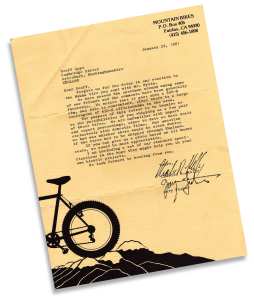
Anyway, the 650B tyres seemed to get quite a good reception, but these were equally difficult to get hold of, so Geoff had to keep stocks for his own Aventura production. Click on the letter above and when the image comes up, click on it for a closer look.
Here is a link to a piece on the history of the 29er
The UK Mountain Bike Phenomenon
1984 saw the arrival of American style mountain bikes on the British market and Geoff became one of the most energetic promoters of this fledgling sport.
The Californian-inspired bikes may have found it difficult to cope with the slippery conditions, and all too easily clogged-up with mud, but they did promote the activity that Geoff was now devoting his life to; seeing his Cleland design bicycles as a part of the whole movement.
Some years earlier he became the local Area Secretary for the Rough-Stuff Fellowship, and went on to found the Cross-Country Cycling Club, leading numerous rides in various parts of England to introduce people to the idea of cycling off-road. He also launched the Wendover Bash series, which promoted a multi-disciplinary approach to off-road cycling events, as well as pioneering observed-trials competitions, organising a number of mountain bike holidays with the Youth Hostels Association, establishing and organising the Kielder Classic national level enduro event and working in collaboration with the UK national Sports Council to set-up the sport officially.
He was also one of the founders of Making Tracks, a mountain biking fanzine. After Making Tracks was absorbed into New Cyclist magazine, Geoff joined its editorial team and moved to the Scottish Borders, where he lives to this day, enjoying the quiet roads and extensive hill tracks that are a feature of this area.
The Demise of Cleland Cycles Limited
In late 1984, Cleland Cycles Limited was put out of business by one of its main suppliers, namely Ron Kitching, who applied to have the company liquidated on a debt of just over £500 which was a few days overdue, whilst holding the company to ransom over a unique component that only Ron Kitching could supply.
This aggressive act means that we will never know how the Cleland design would have fitted into the overall mountain bike market. At that time there was only one type of mountain bike and the market was tiny.
Over the following years, we would see a wide range of ‘mountain bike’ styles emerge, from downhill to slope-style, from freeride to dirt-jump. Presumably, the products of Cleland Cycles Limited would have fitted into their niche, had it not been the victim of this regrettable act; by this time Geoff had exhausted not only his financial resources, but his physical resources as well.
Nevertheless, he and others have continued to develop his ideas. For example, a 24″ wheeled machine, dubbed Dingbat, appeared first, in 1985. The Clelandale, an attempt to create a Cleland from a stock frame and parts, followed this in 1988; Cannondale Beast of the East frame, high-rise-short-reach handlebar, Sturmey Archer drum brakes and, harking back to 1968, 26″ X 1 3/8″ or 37-590 wheels and tyres.
A small, but dedicated, circle of Cleland admirers developed, including other companies who were inspired to produce their own versions of his designs, notably: English Cycles and HighPath Engineering.
Cleland into the 21st Century
Although the steep and short frame geometry, and several other features of a typical 1980 Cleland, have been adopted in mainstream mountain bikes, no single modern mass-produced bike brings all the design and component elements of the Cleland concept together in one unified machine. Indeed, there appears to be a significant reversion in current mountain-bike design with longer wheelbase, slack-angled designs coming back into favour, or fashion, depending on your perspective.
Geoff and other enthusiasts have continued to develop their own Cleland-style bikes and, after a gap of nearly 20 years, in 2006, Geoff began building again and designed a new 29er Cleland, given the logical name Aventura II. This followed his original design more faithfully than was possible back in 1978 because appropriate components were now becoming available.
Geoff has never regarded the Cleland as exotica; it is a down-to-earth practical machine.
Aventuras are now based around an adapted stock frame and built up utilising a Shimano Nexus Inter-8 internal hub gear, roller brakes, full-length mudguards fitted with elevated stays and extensions, 2.4″ 29er tyres and wheels with narrow rims, transmission protection tubes, alloy slateplate, radical elliptical chainrings and bashplate, Haworth swing pedals and a shortened Brooks leather saddle. The bottom bracket bearing is around 14″ above the ground, and, of course, they have the signature high-short riding position.
Geoff remains as enthusiastic as he ever was; never one to blindly follow trends, he continues to innovate, quietly ploughing his own furrow.
Below is some old video footage of Geoff messing about on a 1982 Cleland Aventura in the typical Chiltern mud. During the 1960s, 70s & 80s the Chilterns were much wetter than today and every ride would be predominantly muddy, sometimes sloppy (as in the video) and sometimes claggy, and every consistency in between. Hence the requirement for mudguards and other features to cope with this. It was a common enough occurrence during the last 30 years. But seldom photographed or filmed.
Below is a video of Geoff Apps riding the Cleland Aventura TT in the forests where his original Cleland bikes were developed. The first part shows riding where there is no path, but over brashings (these are piles of branches and waste wood left after the trees have been thinned) and undergrowth, which disguises the terrain beneath. It’s not possible to gain any speed because you don’t know where you’re going in the next few yards until you get to it. The latter part shows a favourite downhill gully. These days this is usually dry, scattered with large and small flints. Twenty years ago this was often a muddy, rocky stream after rain, and just a lumpy quagmire at other times.
And to bring this history right up to date, you may be interested in finding out about the latest incarnation of this design of bike. It’s called The Landseer and Geoff has written a blog to explain the reasoning behind the design and its innovative solutions to riding bicycles off-road. Could this be the future?
BACK TO TOP or return to HOME PAGE


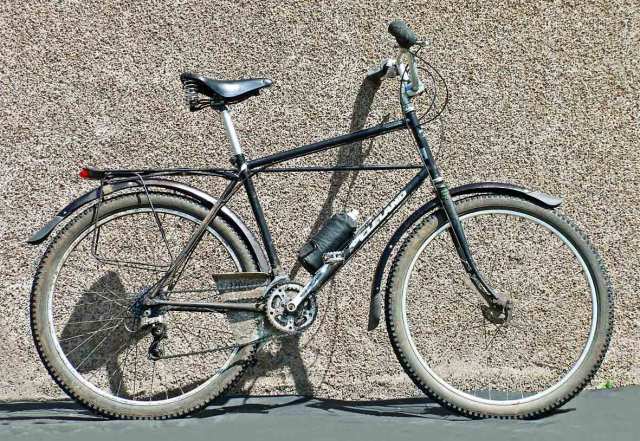
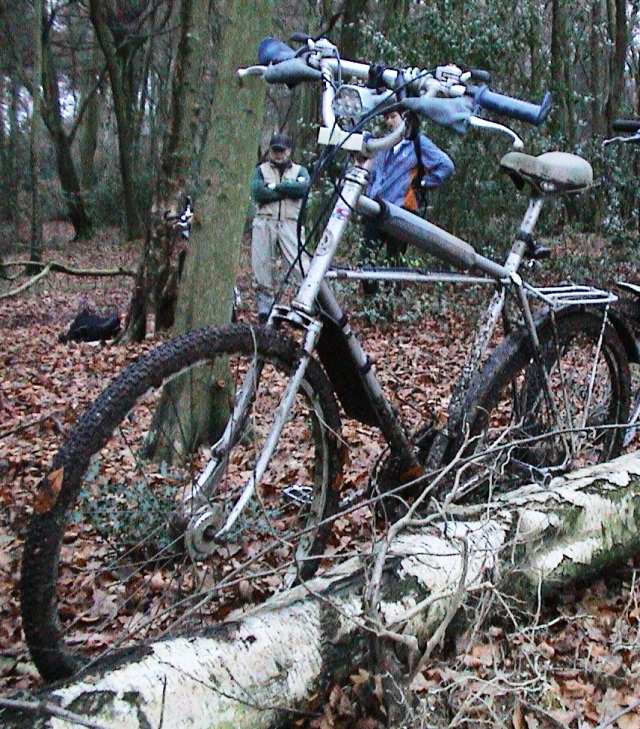

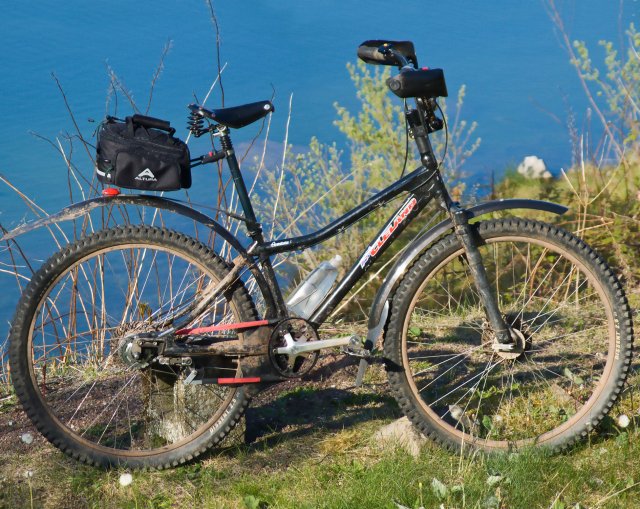
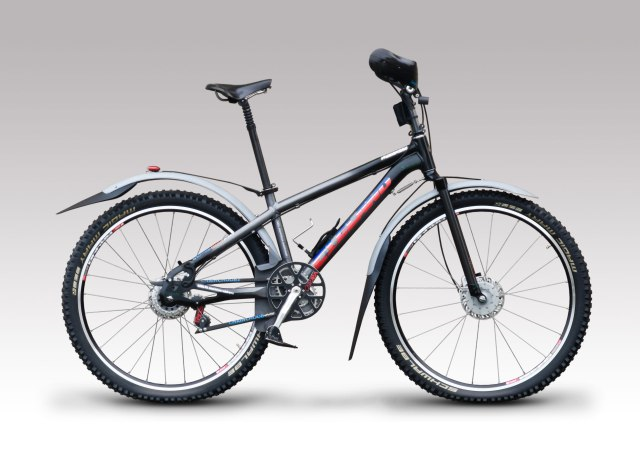





I have a near New old Stock 60cm Eclipse of 531c that will be for sale soon. I doubt this bike has 50mi on it. The previous owner clipped the fenders before selling to me as those pictures are easily found online still. The original Wolber tires showed minor cracking and it now wears 27”x 1-1/4 Paselas
I rode it briefly today and found it a lovely road bike
I have the original bars, stem and 6sp HG freewheel
Now replaced w GB Randonneur bars and modern design aero levers and a 7sp Sachs 12-30 freewheel
Peter Halliday
Hi Graham – I traced the decals: gil@thecycleshed.co.uk. Gil is very helpful indeed and I spotted an Eclipse with the logo in black with white outline (others all white) and he has remade his design to run me off me a set – which I hope will work well on my silver frame.
Hi
I’m also seeking decals for an eclipse canyon mtb,I have original spec lists for eclipse bikes,post your email on here and I can forward pics
Thank you – email: peter.g.e.wyeth@gmail.com. Regards
Another thing I came across is that frames were often outsourced by Eclipse to Orbit of Sheffield (formed 1983). Their frames often had Orbit engraved on the rear forks. Some Orbits had the forks joined at the top, which seems to have been a design by Tom Bromwich of Coventry. His firm closed in 1981, and in 1984 he started Sirius Cycles, who made frames for Orbit. Mine is a modest 531 frame and front forks, with Suntour rear forks, no engraving on the forks or join at the top but the serial number: 060855 would be a clue to someone – it might he an Orbit frame…
Great news. If anyone needs Cleland logo sheets we have original ones. We can also help Highpath or English Cycles owners by providing pictures of their logos styles.
Remember Bike UK well always looking in their shop when in London,bought my Cannondale from them back in the 80’s,will do some online searches and hopefully get some more info,my eclipse is black and would like to restore it,curious to know if it came in other colours as I’m not so keen in black.thankyou
Hi
Great website,I’m trying to source some decals for an Eclipse Canyon,any ideas?
Also regarding the 531 bullmoose bars,were they produced by the framebuilder?
Thankyou
Hello,
The Eclipse bicycle brand was started by Australian Greg Oxenham in the mid 1980s. He was then owner of Bike UK, a bicycle shop near Charring Cross in London. They made a variety of Reynolds steel framed road bikes and mountain bikes. Among the frame builders they used was UK off road bicycle pioneer Jeremy Torr. There is some information about them online which can be found by searching for the term Eclipse together with “Bike UK”.
As for decals, your best bet would be to have reproductions made based on photos of other bikes. I will look through my archives to see if I can find any old pictures, adverts or articles about them. I do not know whether they bought in bullmoose bars or made their own.
Hi Graham Wallace – I have a Bike UK road bike bought in the 80s from Charing Cross (the huge underground car park where Charles Dickens was a boot-black), 531 frame with Wolber wheels, Suntour Cyclone II chainset, Brooks saddle etc – I had it without branding – would it have been an Eclipse? Regards
Hi Petergwyeth,
Eclipse bicycles where handmade by a variety of different UK frame-builders. I do not know if the frame-builders finished the bikes or sent the frames to Bike UK to be built up there. Eclipse being Bike UK’s own brand it is likely that Bike UK added their own Eclipse logos to the frames. However, even with a more specific date for your bike it would be difficult to prove that your bike was an Eclipse or not, Components are likely to have changed over time in line with their availability, FYI, In 1986/77 Eclipse listed four touring & commuting bikes: Eclipse Voyager (531) at £295.= Eclipse Countryman (531 throughout) at £329 – Eclipse Routier (531 throughout) at £389 – and the Eclipse Apollo T1 (531 throughout) at £499.
I can’t however recall seeing Charles Dickens in Bike UK.
Hi Graham – Thank you, that’s fascinating. When you visited Dickens was probably in the back polishing components for Greg Oxenham to put on the frames. I was offered the choice of no-stickers which I took thinking it would make the bike less nickable. As I still have it maybe that was the right choice, although today it would be nice to have an Eclipse logo. Would you have pics & or specs of the Eclipse bikes you kindly mention – mine is in a stylish metallic silver (well it was the 80s)? Best Regards
Hi Petergwyeth,
I am not aware of having any specs or pictures of Eclipse bicycles, I am just getting my information from old magazine adverts that don’t have pictures. However, here are some RetroBike links to threads about Eclipse bikes that show the two bikes and the Eclipse logo and head tube badge. One shows a Countryman touring model.
http://www.retrobike.co.uk/forum/viewtopic.php?f=47&t=403311
http://www.retrobike.co.uk/forum/viewtopic.php?f=6&t=385528
I will check in old magazines to see if if I can find a good example of an Eclipse logo that I can scan. It is unlikely that I will find one but will let you know if I do. The mountain bike on RetroBike fitted new logos, so it might be worth contacting the owner.
Good luck,
Graham
Hi Graham – Thank you – that’s very kind indeed of you. Best Regards
Pingback: Pneu traseiro mais estreito que o dianteiro: faz sentido? (MTB) - Aventrilha
Home made in Coventry – The story of a 1976 Tracker bike
Good morning Graham I’ve always liked adapting ‘normal’ things, not quite as extreme as John Lennon’s psychedelic Rolls Royce, but in my own way.
Back in 1974 when the bike of the day (if you didn’t go for the hard to ride Raleigh chopper) was the 5/10 speed racer. All my father could afford (I still love him for it, in ‘A boy named Sue’ kinda way) was a single speed Dawes Kingpin. What a poncey girly bike with 20” wheels!
Living in industrial Coventry in the West Midlands there was the canal, railway and gasworks and plenty of wasteland so an ideal dumping ground for the odd stolen Austin Cambridge and of course push bikes and parts. So it’s 1974 and I find a 5 speed wheel. Plenty of tools in me old man’s shed as he was an engineer. On goes the five speed block after a mighty struggle to remove it and that started my love of bike image changing. Soon after a derailleur, cable and gear change lever was added and my Kingpin wasn’t so camp after all.
The start of the tracker era for us long haired flared yobs was 1975. I don’t know how it came about as we never read about trackers we just knew from the older boys or someone’s dad maybe.
A 5 speed racing frame I found on wasteground behind Foleshill cemetary was the starting point for my tracker.
A local bike shop in Holbrooks was selling cowhorn handlebars and 26 x 1 3/8 knobbly tyres.
My wheels and other parts came from old 40’s/50’s bikes found dumped on the plentiful wasteland areas.
I loved the style of Westrick wheels so they were my choice and of course a lot of the rear wheels were 3 speed Sturmey Archers. One of the rear wheels I found had a threaded driver ( I later found out that bikes made before 1950 used thread so if you need to find one…) instead of the 3 point cogs fixed with circlip.
I thought it would be great to have both 3 speed hub and 5 speed derailleur gears, no one else agreed so it had to be done.
The main problem I had was the spindle length (6 1/4” I now know are available which will just about allow a 5 speed block) so I cut about 2 inches off an old one and fixed it with a long threaded nut which worked as a spacer as well.
So now we have frame, wheels, tyres and bars. Brake parts and an old saddle and pedals/ cranks were always found on part dumped bikes. Chain was standard with split pin and the derailleur was widened slightly for smooth running.
OK now for the forks straightening. Now me old man had a shed with a bench vice so the forks were done with 2 pieces of wood either side fork and vice tightened. Not heated up!
Now because I wanted working front and rear brakes (no one else did?) a search began for a front caliper that now placed the blocks on the rim after the stretched forks.
That was MY tracker in 1976.
Pingback: A loucura do marketing do Mountain Bike! - Aventrilha
Thanks for the very good and helpful article.
“Riding a Cleland is like riding a BMX bike that’s been fitted with very large wheels.” (from the second video)
This is exactly what comes to mind whenever I think about the best all-around, fun and functional bicycle design. I look forward to reading more and maybe picking your brain someday.
Pingback: Cleland Cycles | Old School MTB
Pingback: Cleland’s Geoff Apps Build Blog | Bicycle Geek
Pingback: Cleland’s Geoff Apps Build Blog | Commotio Populi
Pingback: Functional bikes. Not Porn not Anti - Page 71 - London Fixed-gear and Single-speed
Pingback: Atom | gypsy by trade
Pingback: But a tour has spice | gypsy by trade
Pingback: A very English Mountain Bike « Bicycle Geek
I ordered a red Adventura from Geoff after a bike show in Bristol in the 1980s. Ironically, given the bike was built around Finnish tyres, when I came to pick up the bike I then had a Finnish girlfriend (now wife). Myself and the bike took part in the first UK mountain bike race, organised by the Cranes. Main competitors were pro BMX and cyclo-cross riders, and I was lapped on the first circuit! But one of them had a go on the Adventura and thought it a brilliant concept, and did a respectable time. I took the bike to Finland and used the Adventura and its studded Finnish tyres to to cycle to the local cross-country ski track, skis strapped to bike. But it was a hard winter and at minus 20C the chain oil froze, and probably also the lube in the needle roller bearing bottom brackets. Back in the UK it was a regular sight in Cornwall and later Plymouth where I was studying nav arch, and myself and an engineer looked at replacing the roller bearing with open nylon bearings as used on racing yacht winches. Unfortunately the bike was stolen from my house in Plymouth in the 1990s before we got much further. I’d love to hear from Geoff or anyone who has an Adventura.
Hi Craig, It’s great to hear the story of your Aventura yet sad to hear that you no longer own it. I believe that I have some a few photos of your bike taken in 1984 before you collected it from Geoff.
Do you know its frame number? as this could be help to date earlier bikes.
I now own two Aventuras. One with its original componentry and it’s frame now painted red. Originally it was black. Also one that has always been black that I have owned since1985, and whose frame and brakes were upgraded by Highpath Engineering around 1990. This bike is still ridden regularly though the Bullseye needle-bearing bottom bracket has been replaced by one from a fat-bike.
Outstanding video.
Pingback: Here it is… | Cleland Cycles